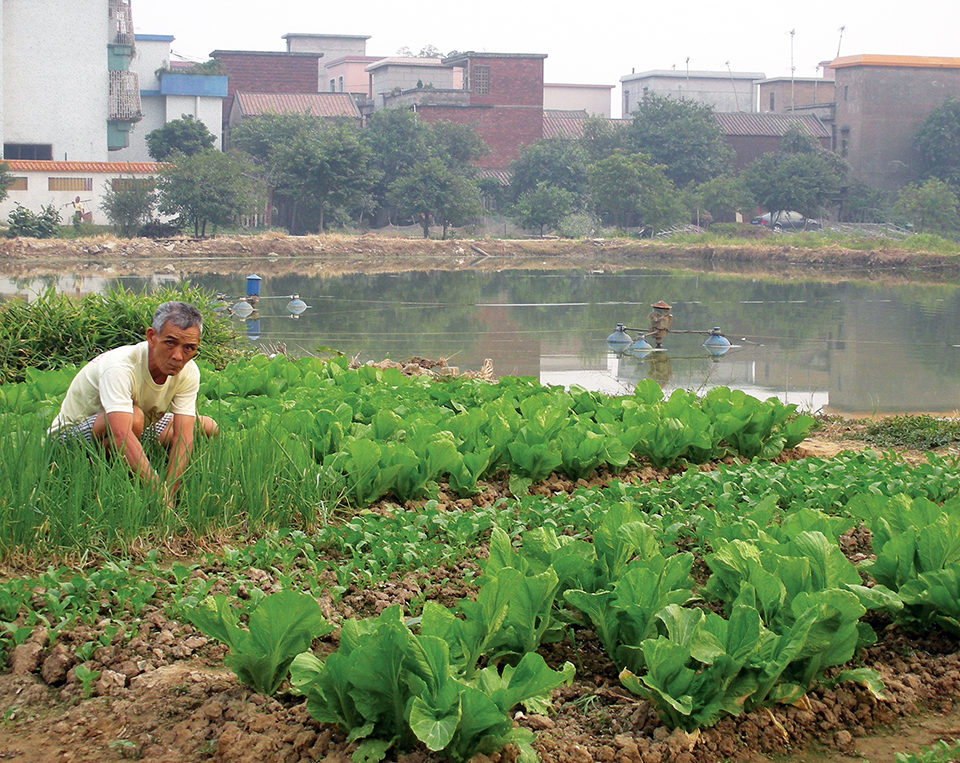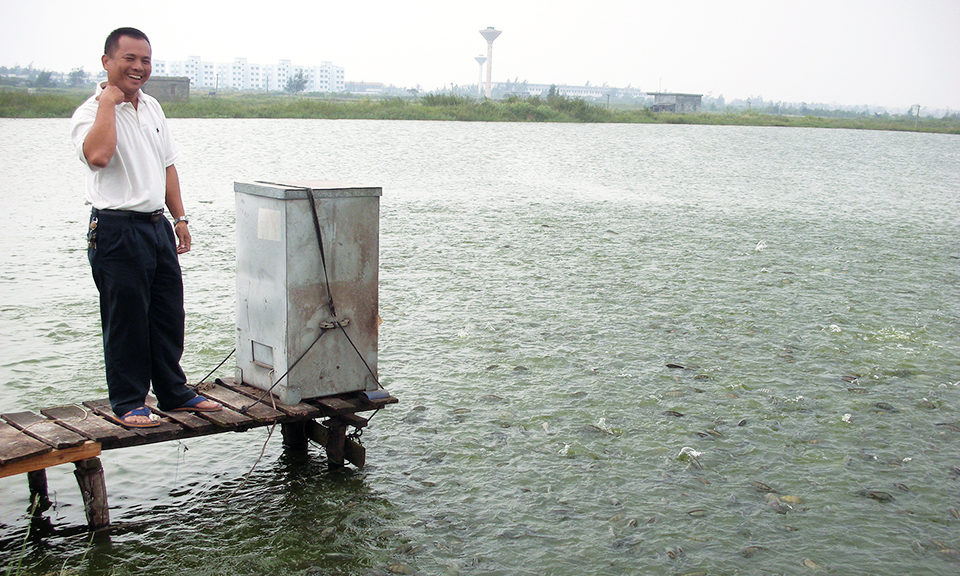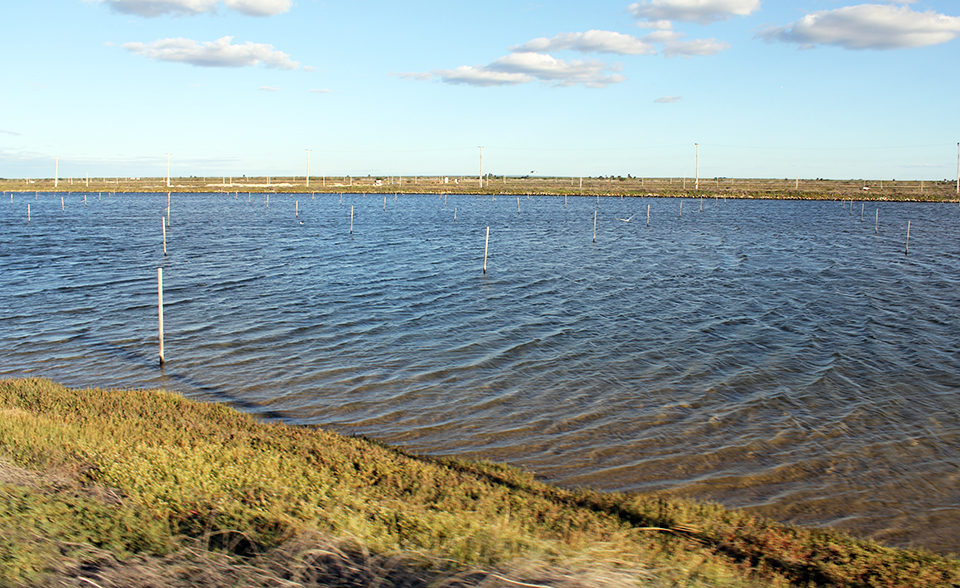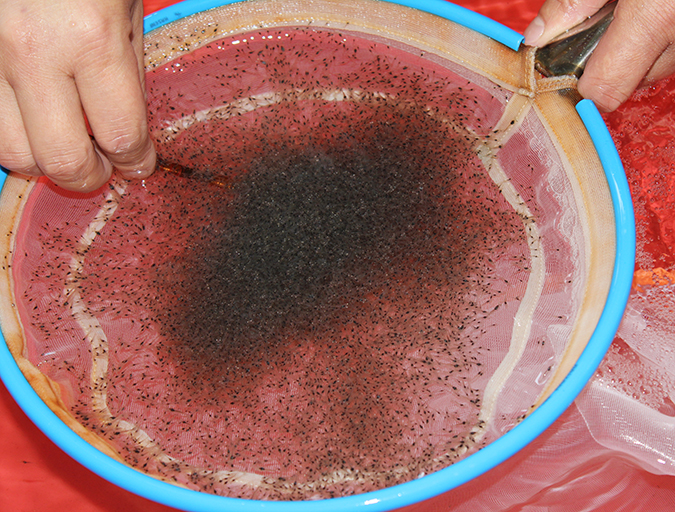Trend to intensify production driven by consumer demand for higher-value species

Dramatic changes have taken place over the last 20 years in freshwater pond aquaculture in China, with a decline in traditional integrated Chinese carp polyculture. There is a major trend of delinking integrated farming enterprises.
Prior to the modern era of formulated feed, pond nutritional inputs had to be supplied from local wastes or byproducts, but pelleted feed is now becoming the most significant source of nutrients for farmed fish. Although more carp are being produced in China today than ever before (over 80 percent of the total national inland aquaculture production), major changes are under way involving intensification and species diversification.
Traditional system
Traditional Chinese carp polyculture with up to nine species is semi-intensive with significant natural food produced from pond fertilization, supplemented with various locally available feeds. The major species are the herbivorous grass carp, filter-feeding bighead and silver carp, omnivorous common and crucian carp, and snail-eating black carp.
Several on-farm and local linkages with agriculture, animal husbandry, cottage-level industries such as distilleries and silk and soybean processing, and sanitation provide wastes or byproducts as pond nutritional inputs. Annual fish harvests range about 4 to 15 metric tons (MT)/ha.
Fertilizers for crops and ponds include animal wastes and vegetation or green manure. Supplementary feeds for fish include wheat and rice bran, soybean and rapeseed cakes, grass and waste from vegetables grown on pond dikes, and wild aquatic macrophytes and snails harvested from local water bodies. Pond mud is used to fertilize terrestrial crops grown on pond dikes. Mulberry bushes are grown for leaves to feed silkworms. The silkworm pupae are a traditional high-protein fish feed.
China’s traditional polyculture reached its highest stage of development in the 1980s during the era of collective ownership. Improved grasses such as elephant and rye grass were cultivated on pond dikes to feed grass carp, and nutrient flows were greatly increased through manure from feedlot livestock as well as chemical fertilizers and formulated feed.
There are two main polyculture models: one dominated by filter-feeding bighead and silver carp stocked at relatively low densities in poorer areas and a second dominated by “feeding fish” (black, grass and omnivorous carp) stocked at higher densities in better-off provinces.
Recent changes
The introduction of a market-driven economy in the mid-1980s and the promotion of aquaculture by the government led to a surge in carp production, as it was relatively profitable compared to rice cultivation and animal husbandry. The inland fish pond area in China expanded by almost 150 percent from 1983 to 2003 as a result of farm construction on agricultural land and low-lying land subject to flooding. However, market saturation caused carp prices and thus farmer profits to fall.
Large-scale integrated farms in the major aquaculture areas have become less integrated following privatization, with widespread delinking of crops and livestock from fish ponds. Most dike crops have been eliminated except for the grass for relatively high-value grass carp. Livestock integration has also declined, as greater intensification leads to excess nutrients from the residual fertilizer effects of feed, negating the need for manure.
Semi-intensive carp polyculture still contributes an estimated 50 to 60 percent of total Chinese inland production. Grass carp is still the major cultured species in terms of total production, closely followed by silver carp, but formulated feed is increasingly fed to grass carp in addition to grass.
The trends to introduce new species and intensify production are driven by consumer demand for higher-value species rather than the lower-value, filter-feeding species that dominate the traditional system, and farmers’ pursuit of greater returns. Farmers are moving increasingly to formulated feed-based production systems, as yields from intensive monoculture of fish such as common carp and tilapia are up to three times greater than for traditional integrated carp polyculture.

Dike-pond system
The well-known integrated dike-pond system of the Pearl River Delta in southern China has changed beyond recognition. The delta is a special economic zone, and Shunde District in the center of the delta is the largest producer of electric appliances in China.
Many farmers are involved in aquaculture in ponds surrounded by urban and industrial developments, as there is a ready market for fish in the relatively affluent area. However, they mainly farm high-value species such as channel catfish, eels, freshwater prawns and soft-shell turtles in monoculture in aerated ponds. Dikes are now narrower to maximize pond surface than when the area was a major silk-producing region characterized by widespread cultivation of mulberry to feed silkworms. Some farmers, however, cultivate vegetables on pond dikes.
External inputs rising
A widely held misconception of the traditional Chinese system is that it is a more or less self-contained, ecologically balanced system requiring minimal input of energy and materials. However, the production and export of large amounts of nutrients in commercial crops such as fish, pigs, silk, sugar and vegetables required considerable nutrient flows from outside the system. The large amount of nutrients required to produce relatively high yields of marketable fish and other farm produce was mainly provided directly from animal wastes, and indirectly from the import of food and feed for resident humans and livestock, respectively.
It has often been suggested that the traditional Chinese integrated carp polyculture system could provide a model for ecologically sustainable aquaculture development elsewhere. Even though it may be environmentally sustainable and provided benefits for centuries, the dike-pond system can not compete with industry in terms of social development, economics or sustainability.
The trend to initially increase the quantity of off-farm inputs to increase production from an integrated system and subsequently to shift from locally integrated systems to more specialist systems drawing in more external inputs appears to be inevitable. However, the long-term consequences in terms of environmental sustainability remain to be seen.
Toward sustainability
The intensification of inland aquaculture from semi-intensive integration to intensive monoculture using formulated feed is causing environmental concerns in China because of pond eutrophication from excess residual nutrients and as yet limited treatment of pond effluents, potentially undermining sustainability.
As a reversion to the traditional integration is highly unlikely, additional research is required on feeding, water management and wastewater treatment technologies for intensive monoculture so that best management practices can be further developed and applied.
An example of a positive development is the “80:20 pond fish culture” system introduced by the American Soybean Association, in which about 80 percent of the harvest weight comes from one high-value species such as grass carp, crucian carp or tilapia fed pelleted feed, and the other 20 percent comes from a “service species” such as filter-feeding silver carp that help clean the water.
Although silver carp have a relatively low value compared to target fish, the improvement in water quality leads to better feed conversion, less disease, reduction or elimination of the need for chemicals and drugs, and therefore higher economic returns for farmers. Thus, some of the principles of traditional Chinese aquaculture are being reintroduced to help make pellet-fed monoculture environmentally as well as socially sustainable.
(Editor’s Note: This article was originally published in the September/October 2008 print edition of the Global Aquaculture Advocate.)
Now that you've reached the end of the article ...
… please consider supporting GSA’s mission to advance responsible seafood practices through education, advocacy and third-party assurances. The Advocate aims to document the evolution of responsible seafood practices and share the expansive knowledge of our vast network of contributors.
By becoming a Global Seafood Alliance member, you’re ensuring that all of the pre-competitive work we do through member benefits, resources and events can continue. Individual membership costs just $50 a year.
Not a GSA member? Join us.
Author
-
Dr. Peter Edwards
Emeritus Professor
Asian Institute of Technology
593 Soi Lad Prao 64
Bangkok 10310, Thailand
Tagged With
Related Posts

Responsibility
A look at integrated multi-trophic aquaculture
In integrated multi-trophic aquaculture, farmers combine the cultivation of fed species such as finfish or shrimp with extractive seaweeds, aquatic plants and shellfish and other invertebrates that recapture organic and inorganic particulate nutrients for their growth.

Responsibility
A look at various intensive shrimp farming systems in Asia
The impact of diseases led some Asian shrimp farming countries to develop biofloc and recirculation aquaculture system (RAS) production technologies. Treating incoming water for culture operations and wastewater treatment are biosecurity measures for disease prevention and control.

Health & Welfare
AHPN inferences based on behavior of vibrio bacteria
Vibrio parahaemolyticus, a strain of which is the cause of acute hepatopancreatic necrosis (AHPN), has both virulent and benign strains. This strain colonizes the stomachs of shrimp by the formation of a biofilm, which protects it from antibiotics and other potential treatments.

Health & Welfare
Acclimating shrimp postlarvae before pond stocking
Shrimp postlarvae acclimation before stocking into the various growout systems (ponds, raceways, tanks) is a critical – and often overlooked, sometimes taken for granted – step in the shrimp culture process. Various water quality parameters should be changed slowly so that the young shrimp have the time to gradually adapt to the new conditions.


